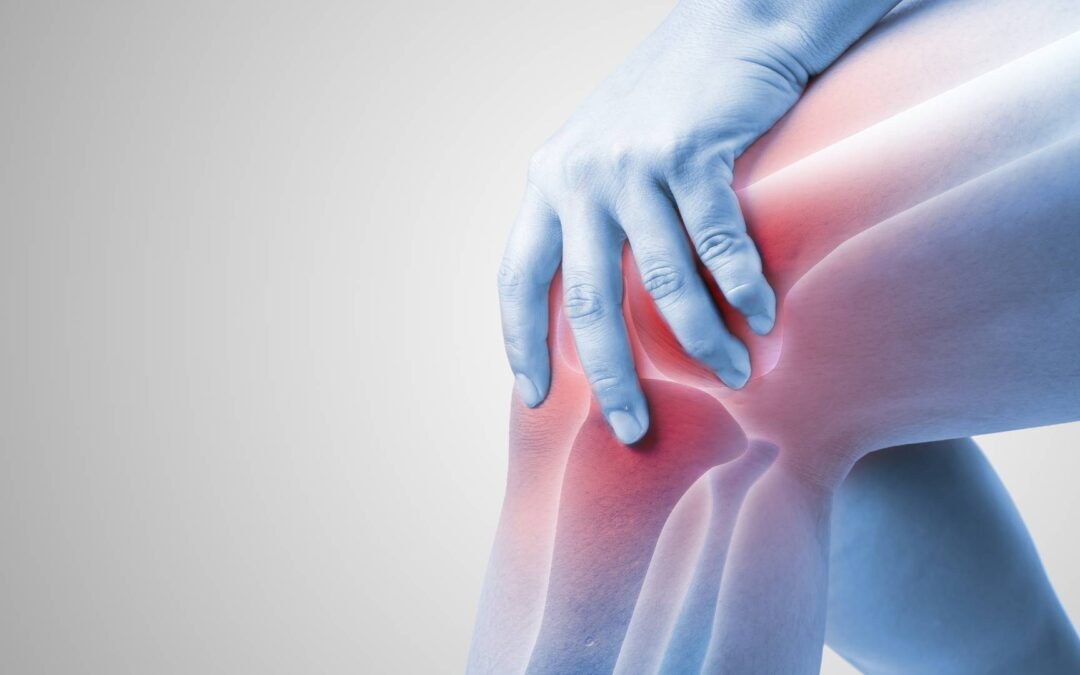Arthritis is a common condition that affects millions of people worldwide. It can cause joint pain, stiffness, and discomfort, making it difficult to carry out daily activities. While there is no known cure for arthritis, chiropractic treatment has been shown to provide relief for many patients suffering from the condition. In this blog post, we will explore the different types and causes of arthritis and its symptoms. We will delve into how chiropractic care can help manage arthritis symptoms and the techniques used to alleviate joint discomfort. Additionally, we will discuss lifestyle modifications that can support chiropractic treatment for arthritis. So, if you or someone you know is looking for alternative ways to manage arthritis symptoms, keep reading!
Understanding Arthritis: Types, Causes, and Symptoms
Arthritis is a term used to describe a group of conditions that cause inflammation and pain in the joints. There are several types of arthritis, each with its causes and symptoms. I’ll provide an overview of the most common types of arthritis, their causes, and their symptoms:
Osteoarthritis (OA)
- Causes: It occurs when the protective cartilage that cushions the ends of bones wears down over time. It can result from aging, joint injury, obesity, and repetitive stress on joints.
- Symptoms: Joint pain, stiffness, swelling, decreased range of motion, and sometimes the formation of bone spurs.
Rheumatoid Arthritis (RA)
- Causes: It is an autoimmune disease in which the body’s immune system mistakenly attacks the synovium (the lining of the joints), leading to inflammation.
- Symptoms: Joint pain, stiffness, swelling, warmth, and redness. RA often affects the same joints on both sides of the body, such as the wrists, hands, and knees.
Psoriatic Arthritis (PsA)
- Causes: It is a type of arthritis that can develop in individuals with psoriasis, a chronic skin condition. The immune system’s response to psoriasis triggers joint inflammation.
- Symptoms: Joint pain, swelling, stiffness, and redness. PsA can also cause nail changes and inflammation in other areas, such as the eyes or spine.
Gout
- Causes: It is caused by an accumulation of uric acid crystals in the joints. High uric acid levels can form needle-like crystals in the joint, leading to inflammation and pain.
- Symptoms: Sudden and severe joint pain, usually in the big toe. Gout attacks can also affect joints such as the ankle, knee, or wrist.
Juvenile Idiopathic Arthritis (JIA)
- Causes: This term refers to several types of arthritis that develop in children under 16. The exact causes are unknown, but it is believed to involve genetic and environmental factors.
- Symptoms: Joint pain, swelling, stiffness, and reduced mobility. Children with JIA may also experience fever, rash, and eye inflammation.
Ankylosing Spondylitis (AS)
- Causes: AS is a type of arthritis that primarily affects the spine, causing inflammation and stiffness. The exact cause is unknown, but genetics and environmental factors may play a role.
- Symptoms: Pain and stiffness in the lower back and hips typically worsen with rest and improve with exercise. AS can also lead to a stooped posture and reduced flexibility in the spine.
The Role of Chiropractic Care in Managing Arthritis

Chiropractic care can play a supportive role in managing arthritis by helping to alleviate pain, improve joint mobility, and enhance overall quality of life. While chiropractic treatment does not cure arthritis, it can provide significant benefits and complement other forms of medical management. Here are some ways chiropractic care can be helpful:
Pain Relief
Chiropractors use various techniques, such as spinal adjustments, joint mobilization, soft tissue therapy, and modalities like ultrasound or electrical stimulation, to reduce pain associated with arthritis. These treatments aim to decrease inflammation, relax muscles, and promote the release of endorphins, which are natural pain-relieving hormones.
Joint Mobility
Arthritis often leads to joint stiffness and restricted movement. Chiropractic adjustments and joint mobilization techniques can help increase joint range of motion, reduce stiffness, and enhance flexibility. This can contribute to improved functionality and make daily activities easier to perform.
Posture and Alignment Correction
Chiropractors assess posture and spinal alignment to identify imbalances that may exacerbate arthritis symptoms. Through adjustments and therapeutic exercises, they work to restore proper alignment, reducing stress on joints and improving biomechanics. By addressing postural issues, chiropractic care aims to alleviate pain and prevent further joint degeneration.
Education and Self-Management
Chiropractors can educate patients about arthritis, its progression, and lifestyle modifications that minimize symptoms. They may provide guidance on exercise, nutrition, ergonomic modifications, and stress reduction techniques. Empowering patients with the knowledge and self-care strategies can empower them to manage their arthritis and optimize their well-being actively.
Collaborative Approach
Chiropractors often work in conjunction with other health care providers involved in arthritis management, such as rheumatologists, physical therapists, and primary care physicians. This collaborative approach ensures comprehensive care and allows for a tailored treatment plan based on the patient’s individual needs.
Chiropractic Techniques for Alleviating Joint Discomfort in Arthritis
While it cannot cure arthritis, chiropractic techniques can help reduce pain, improve joint mobility, and enhance overall well-being. Here are some commonly used chiropractic techniques that may be beneficial for individuals with arthritis:

- Spinal adjustments: Chiropractors use controlled force to manipulate the spine and other joints to restore proper alignment and mobility. Spinal adjustments can reduce joint restrictions, inflammation, and pain associated with arthritis.
- Mobilization: This technique involves gently stretching and moving the affected joints to increase their range of motion. It can help reduce stiffness and improve joint flexibility.
- Soft tissue therapy: Chiropractors may use various soft tissue techniques, such as massage, myofascial release, and stretching, to relax muscles, reduce tension, and improve circulation around the affected joints. This can help alleviate pain and improve joint function.
- Therapeutic exercises: Chiropractors may prescribe specific exercises to strengthen the muscles surrounding the affected joints. Stronger muscles can provide better support to the joints and help reduce pain.
- Lifestyle and ergonomic advice: Chiropractors often provide guidance on lifestyle modifications, such as incorporating regular physical activity, maintaining a healthy weight, and implementing proper ergonomics at work or home. These recommendations can help minimize stress on the joints and improve overall joint health.
It’s important to note that chiropractic care should be used in conjunction with other treatments prescribed by a healthcare professional. Before starting chiropractic treatment, it’s advisable to consult with your primary healthcare provider or rheumatologist to ensure it is safe and appropriate for your specific condition.
Lifestyle Modifications to Support Chiropractic Treatment for Arthritis
Chiropractic treatment can be beneficial for managing arthritis symptoms and improving overall joint health. In addition to receiving chiropractic care, lifestyle modifications can further support your treatment and enhance its effectiveness. Here are some lifestyle modifications to consider:
- Regular exercise: Engaging in regular physical activity is crucial for managing arthritis. Low-impact exercises like walking, swimming, and cycling can help strengthen muscles around the joints, improve flexibility, and reduce pain. Consult your chiropractor or a physical therapist to design a suitable exercise program for your needs.
- Maintain a healthy weight: Maintaining a healthy weight is essential for arthritis management. Excess weight puts additional stress on the joints, exacerbating pain and discomfort. By adopting a balanced diet and engaging in regular exercise, you can achieve and maintain a healthy weight, which will alleviate strain on your joints.
- Ergonomic modifications: Make ergonomic adjustments to your home and work environment to minimize stress on your joints. Ensure that your workspace is set up to promote good posture and reduce strain on your neck, back, and wrists. Use supportive chairs, ergonomic keyboards, and properly positioned computer monitors to avoid unnecessary joint pressure.
- Joint protection: Use assistive devices and adaptive tools to protect your joints during daily activities. For example, jar openers, reachers, and wide-grip utensils can reduce stress on your hands and wrists. Be mindful of your body mechanics and avoid repetitive movements or positions that strain your joints.
- Heat and cold therapy: Applying heat or cold packs to affected joints can help alleviate pain and reduce inflammation. Heat therapy, such as warm showers or heating pads, can relax muscles and improve blood circulation. Cold therapy, like ice packs or cold compresses, can numb the area and reduce swelling. Consult your chiropractor for guidance on the appropriate use of heat and cold therapy for your specific condition.
- Stress management: Stress can exacerbate arthritis symptoms, so incorporating stress management techniques into your lifestyle can be beneficial. Consider practicing relaxation techniques such as deep breathing exercises, meditation, or yoga to reduce stress levels. Engaging in hobbies, spending time with loved ones, and maintaining a positive outlook can also contribute to overall well-being.
- Dietary considerations: While there is no specific “arthritis diet,” some dietary choices may support joint health. A well-balanced diet rich in fruits, vegetables, whole grains, lean proteins, and healthy fats can provide essential nutrients to support joint function. Omega-3 fatty acids found in fish, flaxseeds, and walnuts have been associated with anti-inflammatory properties. Discuss any dietary concerns or specific recommendations with a healthcare professional.
Conclusion
Chiropractic care is a non-invasive, drug-free approach to managing arthritis symptoms. It offers a safe and effective way to alleviate joint discomfort, improve mobility, and enhance overall quality of life. By combining chiropractic adjustments with lifestyle modifications such as regular exercise, proper nutrition, and stress management, patients can experience significant relief from arthritis pain and inflammation. If you’re looking for natural ways to manage your arthritis symptoms, schedule an appointment with Integrative Chiropractic today and discover the benefits of chiropractic care.

